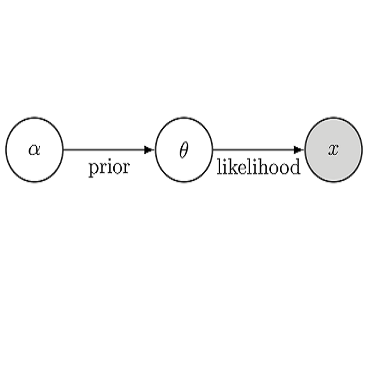Multi-fingered robotic grasping is an undeniable stepping stone to universal picking and dexterous manipulation. Yet, multi-fingered grippers remain challenging to control because of their rich nonsmooth contact dynamics or because of sensor noise. In this work, we aim to plan hand configurations by performing Bayesian posterior inference through the full stochastic forward simulation of the robot in its environment, hence robustly accounting for many of the uncertainties in the system. While previous methods either relied on simplified surrogates of the likelihood function or attempted to learn to directly predict maximum likelihood estimates, we bring a novel simulation-based approach for full Bayesian inference based on a deep neural network surrogate of the likelihood-to-evidence ratio. Hand configurations are found by directly optimizing through the resulting amortized and differentiable expression for the posterior. The geometry of the configuration space is accounted for by proposing a Riemannian manifold optimization procedure through the neural posterior. Simulation and physical benchmarks demonstrate the high success rate of the procedure.
翻译:多指机器人捕捉是普遍采摘和巧妙操纵的一个不可否认的垫脚石,然而,多指握手由于其丰富的非光谱接触动态或传感器噪音,仍然难以控制。在这项工作中,我们的目标是通过对机器人在环境中的完全随机前向模拟来进行巴耶西亚后方推断,从而对系统中的许多不确定性进行强有力的核算,从而规划手动配置。虽然以前的方法要么依靠简化的可能性功能的代管,要么试图直接预测最大可能性估计数,但我们在深度神经网络对概率到证据比率的代管上,对全巴耶斯人的全面推断采用了新的模拟方法。手动配置是通过由此产生的对后方的分解和不同表达方式进行直接优化而发现的。通过神经后方对空间的几何测算,通过神经后方图像和物理基准提出里曼尼的多重优化程序。模拟和物理基准显示了该程序的高成功率。



